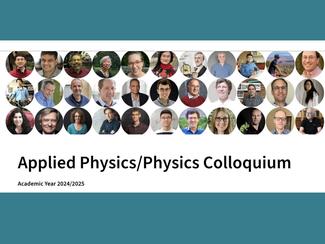
Theory of Strange Metals
Hewlett 201
Abstract: Understanding "strange metal" phenomena - metallic behavior that deviates from that expected of an ordinary Fermi liquid down to the lowest measurable temperatures - is among the most puzzling open problems in condensed matter physics. Such phenomena are observed across many different strongly correlated materials. They seem tied to other interesting phenomena, such as quantum criticality and unconventional superconductivity. I will describe theoretical advances in understanding the possible origins of such phenomena in specific systems, including ruthenates and overdoped cuprates. In particular, I will describe how a strange metal regime can emerge when an unconventional superconductor is suppressed either by a high magnetic field or by temperature.
Erez Berg is a condensed matter theoretical physicist at the Weizmann Institute of Science. "Understanding the quantum mechanical behavior of electrons in solids is one of the most influential scientific discoveries that have shaped the age we live in. Our group's mission is to push this frontier further. We are interested in the physics that emerges from the interactions of a large number of quantum particles, with applications ranging from high temperature superconductivity to quantum information. We employ a large variety of analytical and numerical techniques, including methods borrowed from quantum field theory, quantum Monte Carlo simulations, and tensor network methods. Particular research topics include topological phases of matter, strongly correlated electrons, superconductivity, periodically driven systems, and two-dimensional Van der Waals materials.